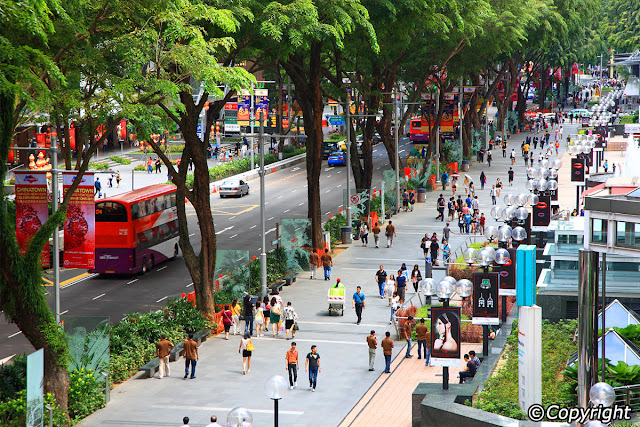What Makes a Great Shopping Street?
By Amy Ikhayanti.
The 'shopping street', or more commonly known as a retail strip in Australia, is undeniably the heart of any urban area. It is indeed the 'smorgasboard' of a shopping experience that can range from clothing, accessories, food and beverage, galleries, gadgets, experiences and other paraphernalia. Undoubtedly, it is one of the most vibrant and attractive places to live, work and play - as well as more commonly the place with the highest real estate value in the wider city. With all that being said, a very curious question arises of how best to create a successful and vibrant shopping street.
As urban designers, we are capable of providing the shell and components of the city. However, there is always the ‘it factor' - that is, something else that injects 'life' to the built form, which makes it an attractive destination for people. In this article, I will take a closer look at three different shopping streets to explore how the built form can influence the identity and vitality of a place.
Orchard Road, Singapore

Orchard Road (Source: Singapore Guide, 2017).
Traffic users: private vehicles, bus, pedestrian
Average building height: 30-40m to the podium and towers up to 200m in height
Landscape characteristic: lush landscapes with green buffer areas and mature trees along the pedestrian path
Pedestrian path: Up to 8m in addition to 4m front building setback.
Arguably the most famous shopping area in Singapore, various mega shopping centres line the strip between the Orchard and Somerset MRT stations. Orchard Road proves that a harmonious co-existence is possible between great pedestrian environments, retail activities and busy vehicular traffic corridors. On each edge of the 16m of two-way road reserve, a generous pedestrian path is provided that spans up to 8m in width that stands in addition to front building setbacks of up to 4m. This ample space allows all different kinds of activities to occur, such as street food stalls, seasonal public art exhibitions, street performances, seating areas, as well as creating a separated green buffer between the traffic and pedestrian zone. The thick green buffer and mature trees (trees which are more than 20m in height) that services as a canopy to the busy street and creates a 'lush' impression. The generous pedestrian path also helps create a spacious feeling that one often doesnt feel in metropolitan areas, despite the busy activities on the sidewalk.
Xintiandi, Shanghai, China
Traffic users: pedestrian.
Average building height: one to two storey houses with pitch roof (approximately up to 10m high)
Landscape characteristic: sparse presence of greenery with occasional trees and shrubs that serve to define public and private (outdoor dining) areas.
Pedestrian path: averaging 5m in width, with 0m building setback and outdoor dining area
Average building height: one to two storey houses with pitch roof (approximately up to 10m high)
Landscape characteristic: sparse presence of greenery with occasional trees and shrubs that serve to define public and private (outdoor dining) areas.
Pedestrian path: averaging 5m in width, with 0m building setback and outdoor dining area
Apart from being one of the most trendy areas for shopping, dining, or simply hanging out, Xintiandi is one of the most famous and successful urban renewal projects in Shanghai. Previously, the area was full of dilapidated shikumen houses, which is a traditional Shanghainese architectural style that combines both Western and Chinese elements. Most of the neighbourhood is redeveloped into mixed-use high-rise buildings, while a couple of blocks that contain the original shikumen buildings are maintained and converted into a pedestrian-only entertainment district. It is worth noting that in a car-oriented Shanghai, the presence of a pedestrian-only block is unusual and accentuates its character and attractiveness as a destination for locals and tourists. In other words, Xintiandi is an example of creating a successful retail destination through creating unique place branding.
Bourke Street Mall, Melbourne, Australia
 |
| Bourke Street Mall (Source: Flickr, 2017). |
Traffic users: pedestrians and trams
Average building height: ranging from 15m
to 30m in height.
Landscape characteristic: mature trees (up
to 10m high) on planters that double as seating areas.
What about you? Can you think of any other shopping streets that can be added to this list?



Comments
Post a Comment